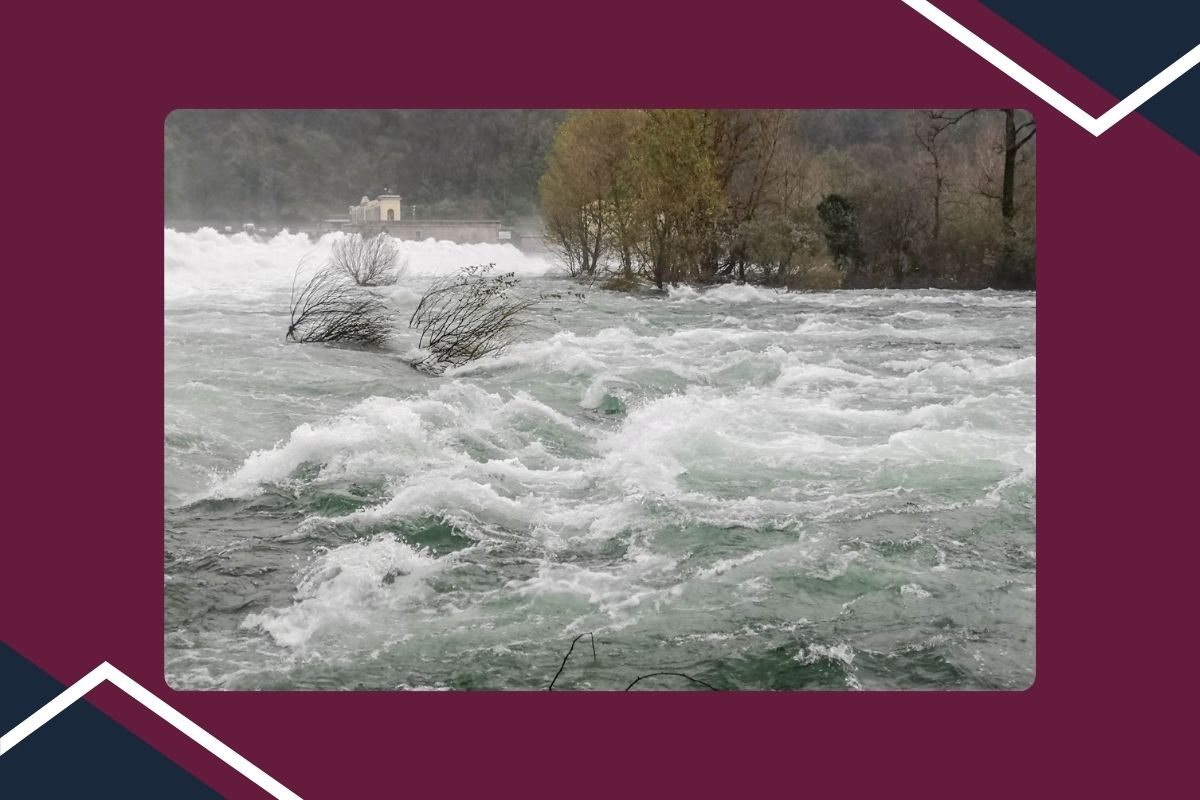The Importance of Flood Insurance: Lessons from Hurricane Helene
When Hurricane Helene made landfall, it didn’t just bring with it torrential rains and storm surges – it left thousands of homeowners and business owners in Georgia, North Carolina, and South Carolina facing a grim reality. Most of these residents did not have flood insurance. According to an analysis by Politico and E&E News, only 2% of the homes hit by Helene had a flood insurance policy in place. The aftermath of the hurricane revealed widespread destruction, both physically and financially, with countless families struggling to rebuild without the safety net that flood insurance provides.
This devastating event highlights a critical message: flood insurance is not just for those living in high-risk areas. Flooding can happen anywhere, at any time, as weather patterns become increasingly erratic. Even here in New Jersey, while we may not face hurricanes as frequently as the southern states, we’ve seen a rising number of torrential downpours and unexpected floods in recent years. Despite this, many residents and businesses are still unprepared. The average flood insurance claim in New Jersey has been $47,700 over the past decade, reflecting the significant financial burden floods can impose, even in areas once considered low risk.
What is Flood Insurance and Why It’s Vital
Flood insurance is a specialized policy designed to cover losses and damage caused by flooding – an event that’s typically not covered under standard homeowners or commercial property insurance policies. Flooding is classified as water rising from natural sources such as heavy rain, storm surges, river overflows, or rapid snowmelt. Without flood insurance, you are left to cover the costs of repairs out of pocket, which can quickly add up, even after minor flooding.
There are two main types of flood insurance coverage:
1. The National Flood Insurance Program (NFIP): Backed by the federal government and administered by FEMA, the NFIP offers coverage for both residential and commercial properties. It’s available in participating communities across the U.S. and provides coverage for:
- Building property (up to $250,000 for residential homes and up to $500,000 for businesses).
- Personal contents (up to $100,000 for homeowners and business contents based on the policy limits).
2. Private Flood Insurance: For those seeking higher limits than what the NFIP offers, private insurers provide extended coverage options. This is especially useful for high-value properties or for businesses with substantial assets at risk.
Why You Need It
Many people mistakenly believe that flood insurance is unnecessary unless they live in a high-risk flood zone. However, FEMA reports that nearly 20% of flood insurance claims come from properties located in low- to moderate-risk areas. As witnessed with Hurricane Helene, areas far from the coastlines can still suffer catastrophic flooding, and with changing weather patterns, no location is immune. Having flood insurance provides peace of mind that your home or business is protected from the unpredictable.
It’s important to note that flood insurance policies typically have a 30-day waiting period before they take effect. This means you can’t wait until a storm is approaching to purchase coverage. Planning ahead is crucial to ensure that you are protected when you need it most.
Flooding in New Jersey: A Growing Concern
While Hurricane Helene may have struck southern states, the lesson it teaches is highly relevant to New Jersey. Over the past few years, our state has experienced an increase in extreme weather events, including heavy rainfall and flash floods. Once considered rare, these events are becoming more common, even in inland areas previously seen as low-risk.
According to the National Oceanic and Atmospheric Administration (NOAA), New Jersey has seen a sharp rise in precipitation levels, leading to frequent flooding in urban, suburban, and rural areas alike. Coastal regions have always been at risk, but now inland communities are also grappling with unexpected floods. Even areas outside FEMA’s designated high-risk zones have experienced significant damage.
The Financial Toll of Flood Damage
Flooding can be incredibly destructive, often causing damage that is both immediate and long-term. Without the right insurance, the costs of repairing structural damage, replacing personal belongings, and restoring business operations can be astronomical.
- For homeowners, one inch of floodwater can cause up to $25,000 in damage, according to FEMA. Floodwater can damage walls, flooring, and furniture and lead to dangerous mold growth if not properly addressed. Without flood insurance, homeowners are left to shoulder these costs themselves.
- For businesses, the stakes are even higher. Flooding can destroy inventory, equipment, and vital infrastructure, leading to costly downtime. Businesses may also face long-term financial loss if they are forced to close for extended periods. Commercial flood insurance helps protect against these risks by covering physical property damage and often loss of income due to business interruption.
In New Jersey, the average flood claim through the NFIP is $47,700, illustrating just how expensive flood recovery can be. Whether you own a home or a business, the financial risk of flood damage far outweighs the cost of insurance.
Why Flood Insurance Matters, Even Outside of Flood Zones
One of the most significant misconceptions about flood insurance is that it’s only necessary if you live in a designated high-risk flood zone. However, flooding doesn’t only occur along coastlines or riverbanks. As Hurricane Helene demonstrated, inland areas can be just as vulnerable, especially as climate change intensifies weather patterns and increases rainfall.
FEMA’s flood maps are a helpful guideline, but they don’t predict every potential flood risk. In fact, floods often occur in areas classified as low- or moderate-risk. As a result, many homeowners and businesses that forgo flood insurance are left unprotected when flooding does occur. With storms growing stronger and more unpredictable, flood insurance is an essential safeguard, regardless of where you live.
Key Takeaways
As weather patterns continue to shift and flooding becomes more frequent, now is the time to take action. Whether you live in a coastal town or a quiet inland community, the increasing severity of storms like Hurricane Helene serves as a reminder that no one is safe from the threat of flooding.
Flood insurance is not just a precautionary measure – it’s a necessary investment in protecting your home, your business, and your financial security. With average flood claims nearing $50,000, the cost of flood insurance pales in comparison to the expense of repairs and recovery. Don’t wait until it’s too late to protect yourself from the devastating impact of flooding.
Contact us today to learn more about your flood insurance options and how we can help you protect your future.
Related Articles
Updating Insurance Policies During the New Year
Written By: Sandy Wilson, Personal Account Executive Make Updates to Home and Auto Policies As you settle in to the New Year, it’s time to take stock of your…
Change of Season Insurance Reminders
Written By: Bob Conner, Agency Principal Insurance Tips for Fall As much as most of us love summer… long sunny days, vacations, shorts and flip-flops… it’s…


